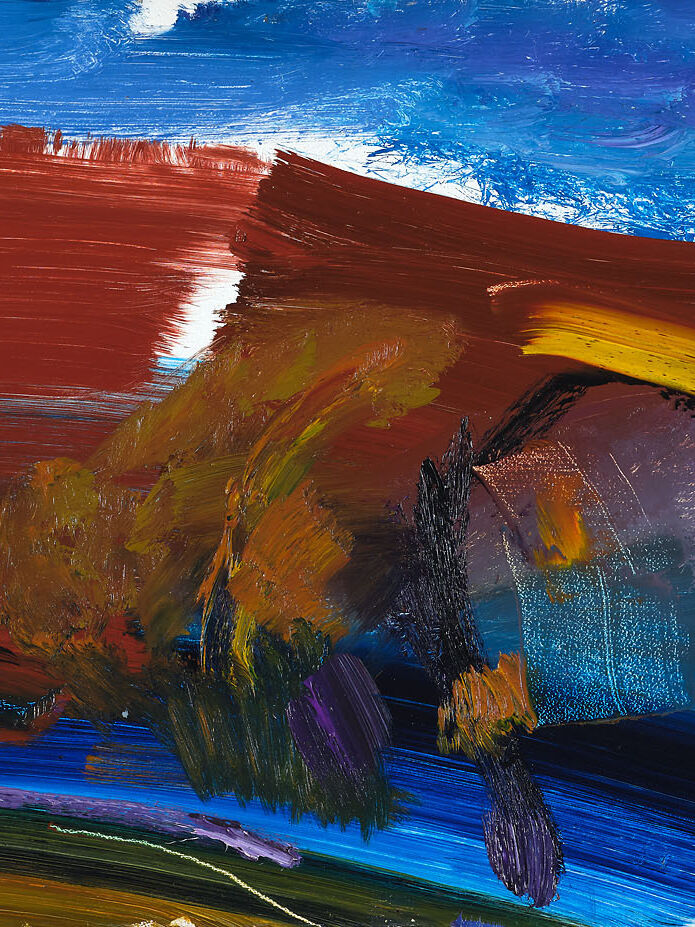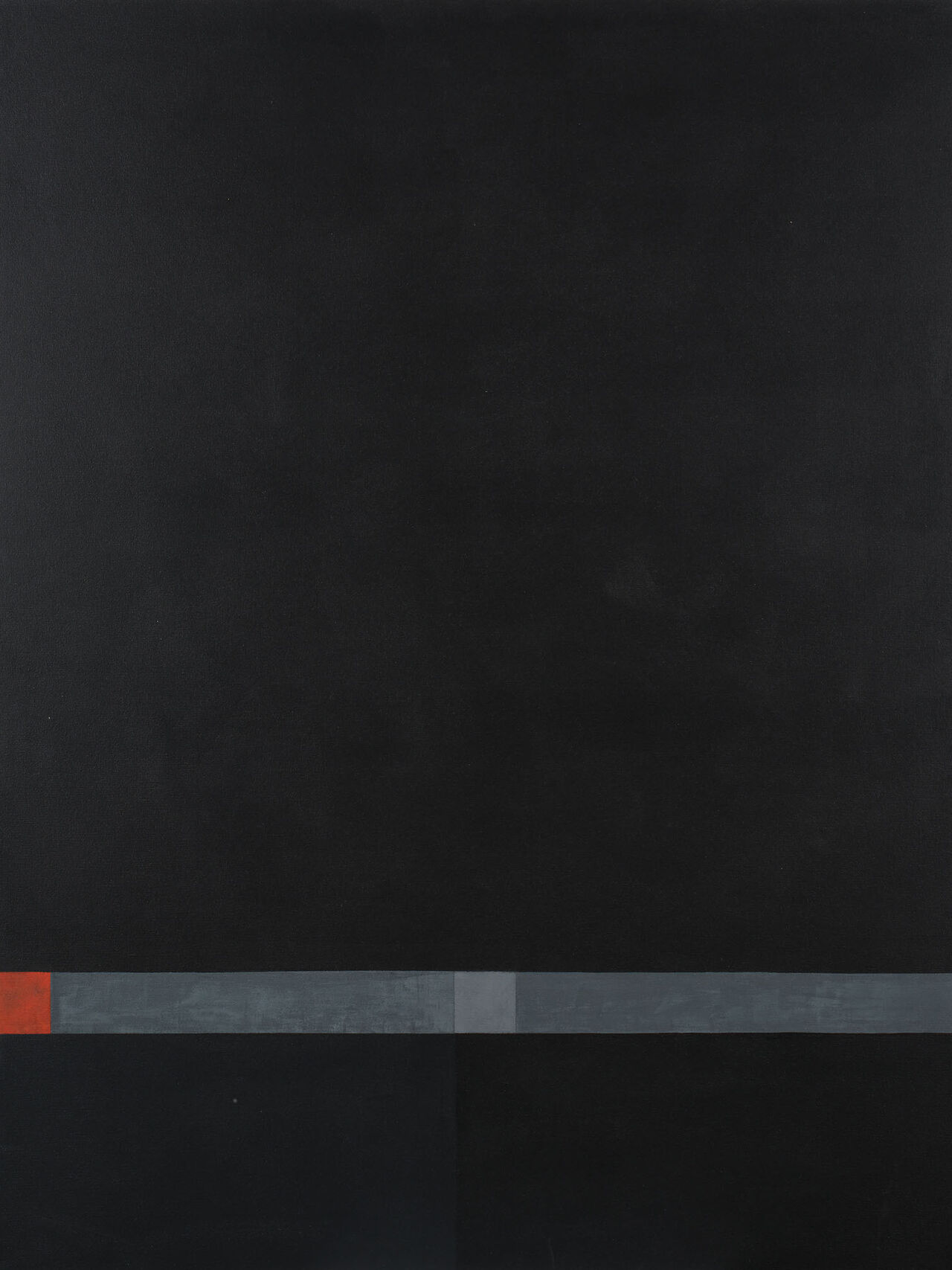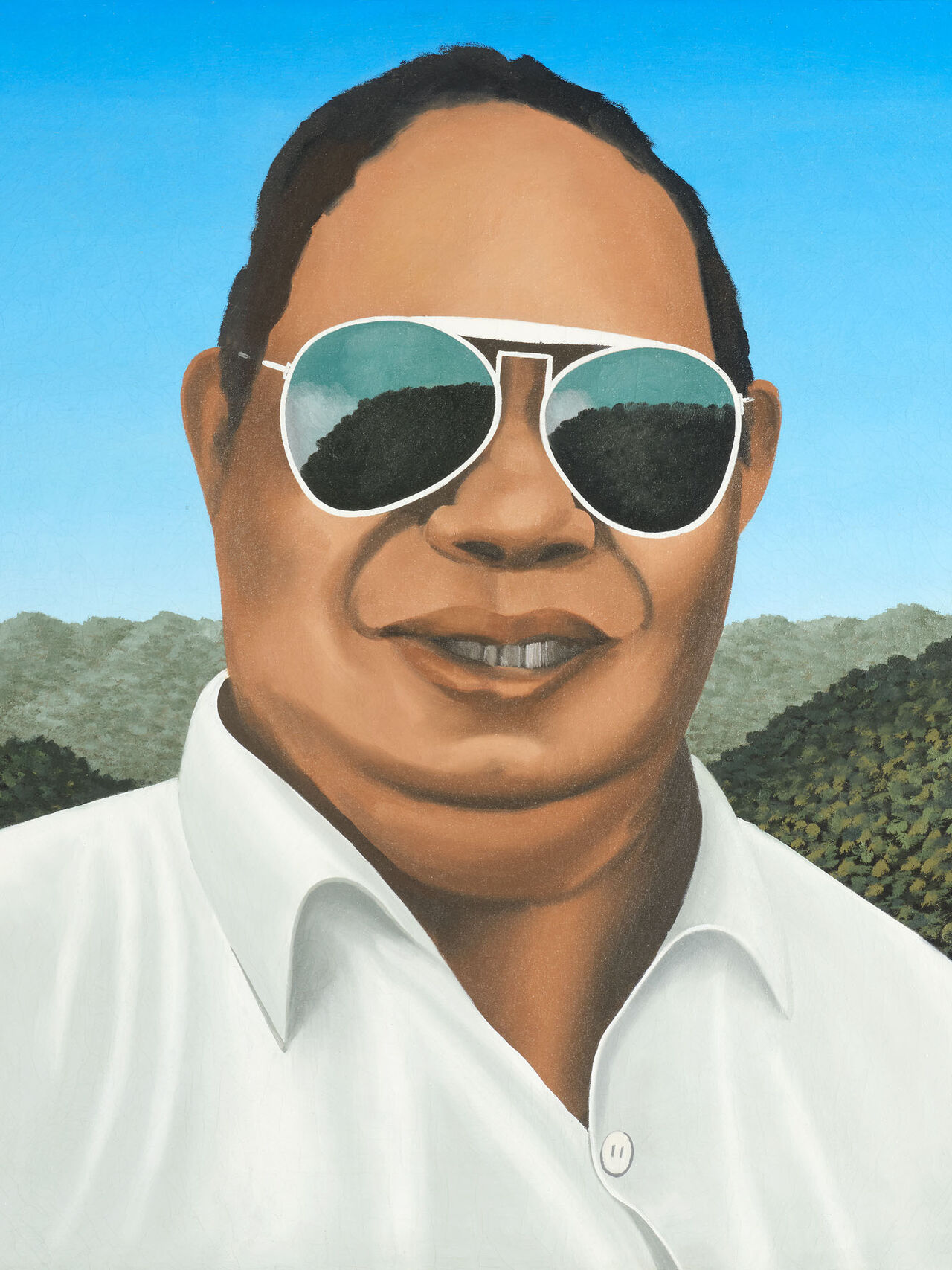Paul Dibble 'Giant Male Figure After Goya'
Peter James Smith
Essays
Posted on 19 March 2025
It is curious that Paul Dibble’s seated Giant Male Figure after Goya, 2000, is a three-dimensional life-sized sculpture cast in bronze, yet appears from a distance as a two-dimensional drawn image. The three-dimensionality essentially disappears as the viewer moves around the sculpture. Perhaps this effect is because the sculpture was born out of a drawing, like a drafted dress-maker’s pattern cut from two pieces of canvas with edges sewn together. The casting process then commences by filling this shape with liquid plaster. Upon drying, an underlying marquette is created, essentially a prototype of the final work which can then be cast by the lost wax method in sections. The staged process is quite technical: create a negative mould of the marquette; apply wax; remove the mould; apply wax drainage pipes (sprues); apply multiple ceramic shell layers to the wax; dry; fire to melt the wax; pour molten bronze into the hollow ceramic shell; weld together the hollow bronze sections and finish (chase); and finally, apply the final surface (patina).
This process in essence has been followed for centuries in bronze casting, and Dibble will have followed a similar route in his own foundry. The multiple stages account for the complexity and expense of the process. The chasing and patina can be hard won, because they are responsible for the final surface which the viewer is inevitably drawn to touch. Dibble’s Giant Male Figure has a smooth patina with explicit surface imperfections, giving the work a humanist quality. This finish contrasts strongly with the rough lath and plaster surface of the plinth.
So that we are not drawn to recall the monumental seated male figure of Auguste Rodin’s 1904 seated Thinker, whose deepness in thought almost triggers a sense of philosophical anxiety, Dibble references Francisco Goya through his specific titling of the work. His broad interest in Goya possibly focused on a specific aquatint—Seated Giant, 1818. This half-lit image is a mysterious parable on the nature of power and the horrors of war capturing a moment in history at the time of the Napoleonic Wars. Typically, Goya’s seated figure is hunched and muscular and viewed from behind, with a pose that is almost angular, as if this leader of men has just seen, then turned away from, the ‘disasters of war’. Goya’s seated giant is a symbol of the rise of empires and the consequences when they fall.
However, in Giant Male Figure after Goya, Dibble does not concentrate on the muscularity of the figure nor its weight, but its lightness. The so-called dress-maker’s pattern used for the conception of his figure has allowed Dibble to bring a heartbeat to the bronze by inserting a negative space down the spine of the figure, repeated through the buttocks, and then mirrored in the underarm spaces and the position of the bracing leg. Viewers of the sculpture therefore immediately see three vertical lines of piercing light. This counteracts the breadth of the shoulders and the mass of the body. It triggers an organic rhythm that brings serenity to the pose of the figure and a lightness of being— in contrast to the visible heavy down-weight of the plinth. Dibble models a classical European head and uses classical proportions to measure his figure with the lengths of head: torso: legs in the ratio of 1:2:3. The humanist pose is simultaneously one of strength and isolation, both in thought and from others. It stands as a reflection on a life lived away from the population centres of Europe in a distant South Pacific.
cast bronze, founder’s proof
from an edition of 3
signed and dated 2000
2450 x 1400 x 700mm
Provenance
Private collection, Manawatu.
$200 000 – $300 000



